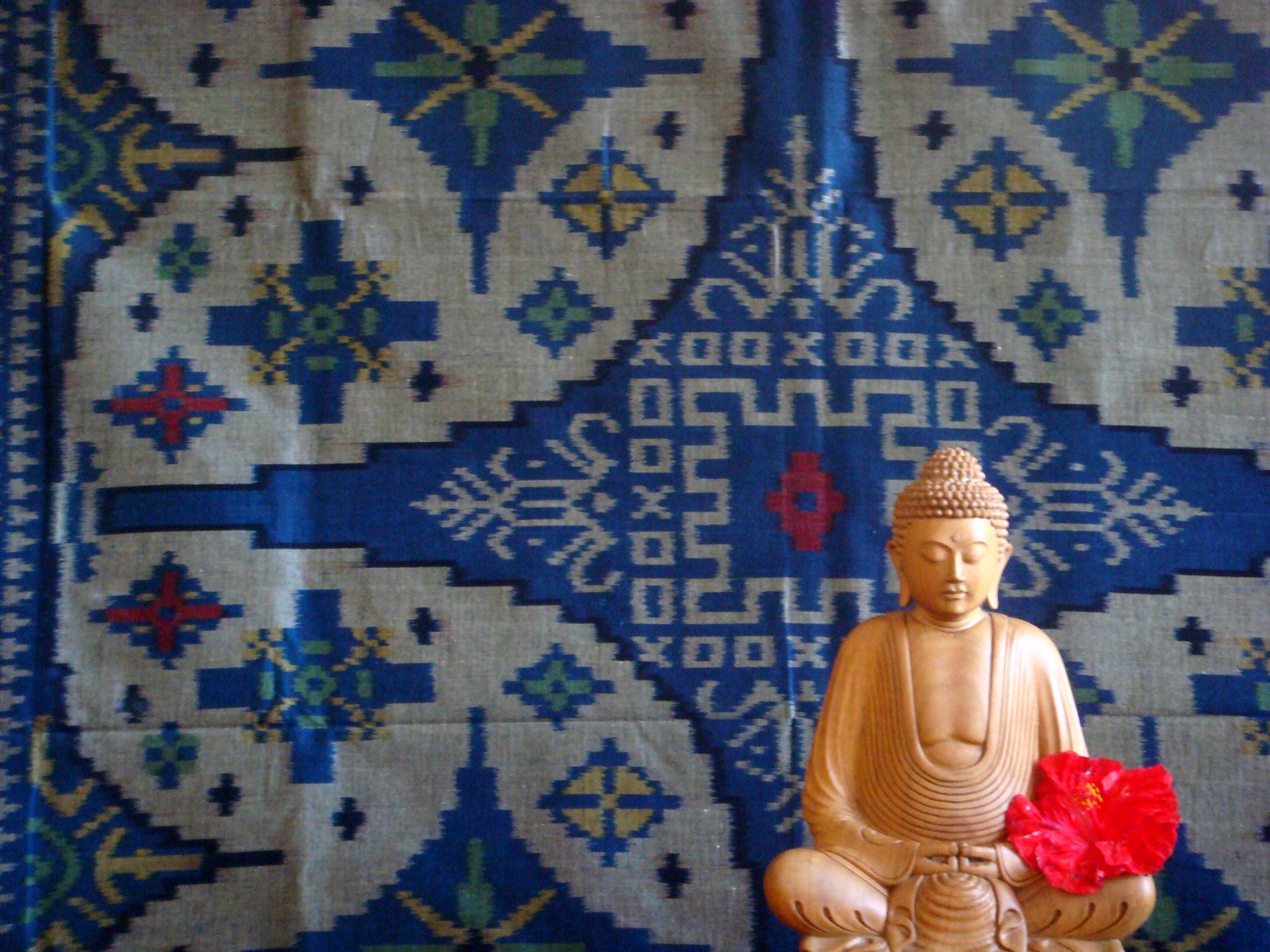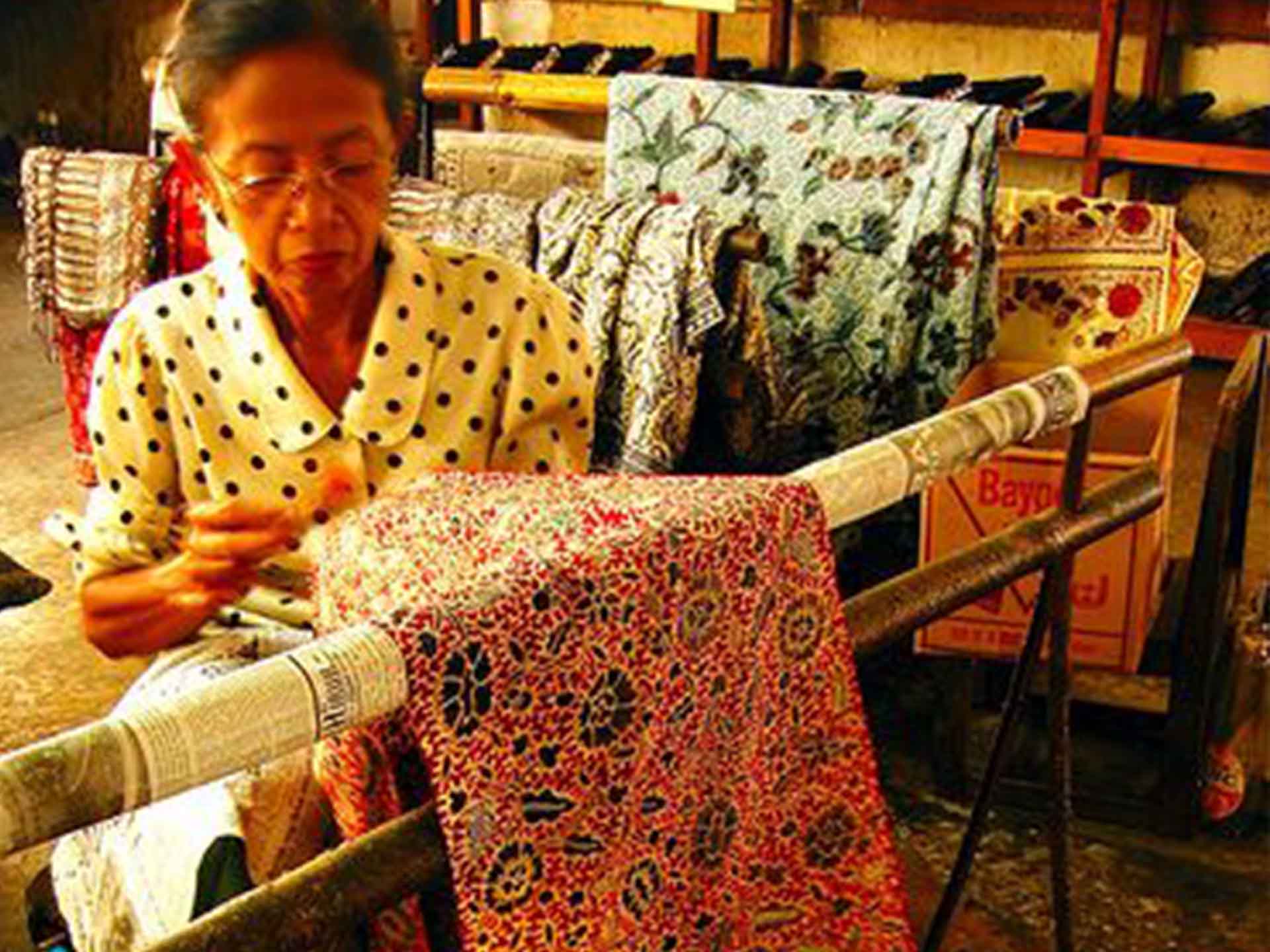

About 8 degrees south of the equator in the Indian Ocean, Bali is just one of 17,000 islands in the world’s largest archipelago, Indonesia. (give or take 1000 depending on the tides!) Less than 4,000 islands are actually inhabited. Bali today, has a population of nearly 4 million in a nation of 270 million people. Located between Java and Lombok, and known for tropical beaches, lush valleys and sacred volcanoes, Bali maintains a unique society blending art and ritual in daily life. Terraced rice-fields, skilled artisans, dancers and gamelan musicians, Bali is a place that has touched many visitors with its welcoming hospitality.
Ubud, as the arts and cultural center of island, is where you can begin your journey into the heart of Balinese culture.

Bali is located between Java and Lombok…

Indonesia comprises of over 300 different ethnic groups and the foundation of its various cultures lie in animist beliefs that everything has a soul and spirit. Beginning in the first centuries AD, Indian maritime traders brought with them influences of Hinduism and Buddhism. Gradually Hindu gods became manifested into the Balinese spirit belief system and in the elements of nature. The religion of Bali was known as Agama Tirta, or the religion of water. Agama Siwa Buda was the blending of Shivaism and Buddhism along with its conceptions of the cosmic universe.
The Balinese focus is directed towards the sacred volcanoes of the island. Ubud comes from the word Obad meaning medicine. The birthplace of Ubud is a temple called Pura Gunung Lebah located in Campuhan (meaning meeting of the waters). A high priest from Java founded this temple in 8th century at this auspicious meeting of the rivers with medicinal powers. Located in the fertile middle lands, Ubud looks up to Mt. Agung, Batur, and the Batukaru range- the abode of the gods offering fertility and prosperity. Following the decline of the Majapahit Empire on Java in the 15th century, priests and artisans relocated to Bali reinforcing the concept of Bali Hinduism as it is practiced today, honoring the cycle of life daily in ceremonial offerings to the gods, ancestors and spirits. A significant symbol of Bali today is the black and white (yin-yang) checkered cloth called poleng.
You will often see statues of protective deities draped in this cloth. The Balinese recognize and believe in the co-existence of forces both good and bad, dark and light, seen and unseen, and strive to maintain balance and harmony in their world.
The Wuku Calendar is a 210-day cycle comprising of a 2-day, 3-day, 5-day and a 7-day week and which determines auspicious days to undertake activities from farming to house-building and the various rituals and ceremonies. On inauspicious days, offerings are given to lower spirits to ensure continued balance.
As a Balinese temple celebrates its anniversary (odalan) every 210 days, visitors are bound to come across a ceremony somewhere on the island.
One of the most important ceremonies to the Balinese is between Galungan and Kuningan - a period of 10 days when ancestors and gods come to visit family temples. This is a very colorful time in Bali with each home gate decorated with a bamboo pole called penjor.
The Saka Calendar - the second calendar system originated in India. The calendar year runs 78 years behind the Gregorian calendar, so 2021 is 1943 in the Balinese Saka calendar. New and Full Moon days are often auspicious times for rituals.
The Balinese New Year, called Nyepi, falls on the Dark Moon of March.
As the Saka calendar originated in India, the time around the northern hemipshere spring equinox traditionally marks the beginning of the new agricultural year. The days leading to Nyepi in Bali is a time of purification. Sacred temple objects are brought to the sea in procession to be cleansed. In the villages, huge demonic effigies are created. The night before Nyepi turns into a wild and fun procession in the villages casting off bad spirits with the effigies called Ogoh-Ogoh.
The next day of Nyepi is a day of complete silence. No one is allowed on the roads- all traffic is banned, the airport and seaports are closed. It is believed with the empty roads and silence, the banished spirits are not tempted to come back. Traditionally no one works, no fires are lit and no lights are turned on. It’s a wonderful day to simply stop, reflect and renew. Guests can pre-order Nyepi food boxes and enjoy a peaceful day of quiet opening your hearts to the sound of nature.
Dress in villages and temples:
Please remember to respect local customs. Bali is a very relaxed place but traditional values remain strong.
Casual but more conservative dress in villages is appropriate. Ubud is not by the beach. When entering any temple, traditional dress of sarong and sash (selendang) is required for both men and women.
Wonderful sarongs are easily found in town and the hotel staff are always happy to assist with lending you appropriate temple dress.



Balinese traditional painting, dance and wayang shadow puppet plays depict ancient stories, morals and myths of battles between good and evil influenced by the Ramayana and Mahabharata epics. The Ramayana which tells the story of Prince Rama rescuing his beloved wife Sita from the evil King Rahwana with the help of the White Monkey Hanoman and his army is commonly performed in traditional dance. While in Bali, make sure to experience a Kecak Dance performance with over 100 men chanting and improvising the story of the Ramayana. Traditionally this chanting was a ritual to exorcise bad spirits. The Kecak as performed today, was inspired by German artist Walter Spies who settled in Ubud in the 1930s. New styles of art and painting have developed on Bali with influences of other western artists that began settling on the island who as Walter Spies, became entranced by Bali’s unique artistic culture.



Textiles play an important role in daily life in both dress and in trade. The traditional weaving arts are very rich throughout Indonesia.
Batik, a wax and dye process originated on Java.
Ikat is an Indonesian word meaning to tie. On Bali, the single-weft ikat fabric is called endek.
The ikat tie and dye technique is used in the textiles of Bali and throughout the eastern islands of Indonesia. Batik and hand-woven fabric are very much used for every-day dress. Textiles also play an important role in rituals and offerings. In the Bali Aga (aboriginal Bali) village of Tenganan in East Bali, double-ikat cloth called geringsing are still being woven. Beautiful single-weft ikat cloths are available in abundance in shops of Ubud and at the textile market of Klungkung in East Bali. Driving north of Klungkung, you will come into the beautiful rice-terraced valley of Sidemen where weavers also weave gold and silver-thread cloth called songket.
Bali is also known for its exquisite craftwork with silver and in wood and stone carving.
These traditional arts have also given way to a thriving contemporary art scene.
Ubud is bustling with galleries and shops. Music and dance groups perform each evening.
Daily Bali life is an art form in itself which visitors cannot help but notice in the beauty of daily offerings- an expression of gratitude to the gods and nature giving us life.
Further Recommended Reading:
NOW! Bali Magazine
Very interesting articles on the culture of Bali online: https://nowbali.co.id/
If not able to find these books listed below at home or online, visit Ganesha Bookshop in Ubud opposite the Post Office or Periplus Books in the center of town.
Island of Bali, Miguel Covarrubias, Alfred Knopf, New York, 1937
Classic introduction to life, culture and the arts still very much alive in Bali today.
A House in Bali, by Colin McPhee
A Canadian composer’s classic memoir of his discovery of Bali and his passion for the music.
A Little Bit One O’Clock, Living with a Balinese family. William Ingram 1998.
The Painted Alphabet, A novel by Diana Darling, 1992.
Tales of Bali, Vicki Baum, The Literary Guild of America, New York, 1938
Bali: A Paradise Created, Adrian Vickers, 1989
Bali: Sekala and Niskala, Vol 1 and 2, Fred Eiseman, Periplus Editions.
For those interested in Bali ritual understanding.
The Magic Gecko: 18 years in Indonesia 1963-1981 by Horst Henry Geerken
who describes struggles against the colonial Dutch, the mystery of the Fall of Soekarno, along with personal, often humourous experiences in a country he loves.